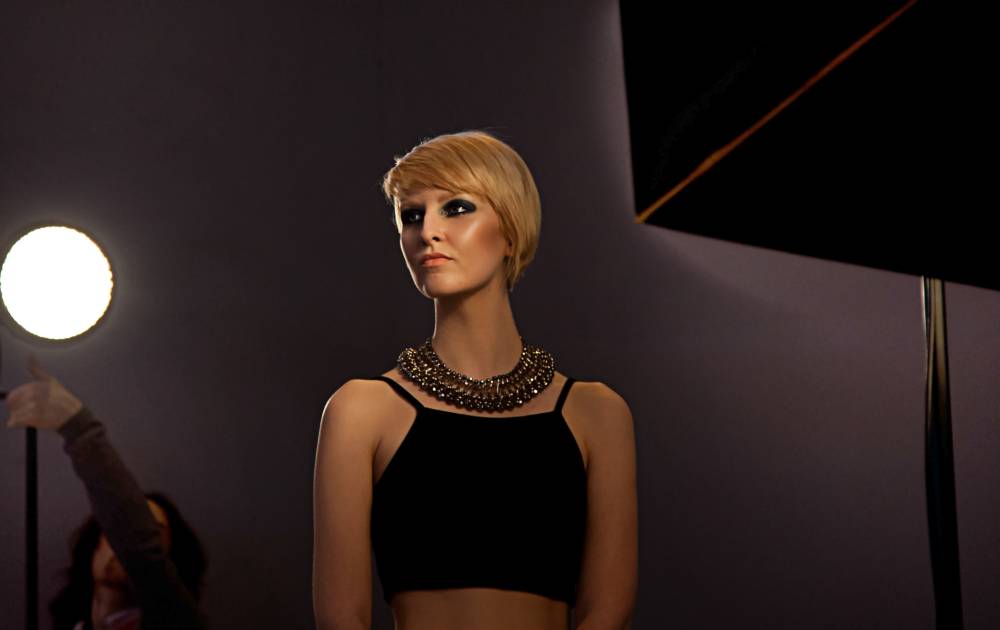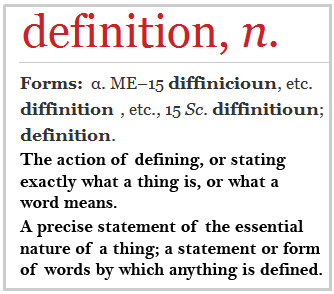![]()
Key light
The key light is the most important light in the range of lights used in a scene. The key light is used as the main illumination. As such, it can be used in two effective ways.
First, the key light can provide the main overall lighting for the scene. In this way it effectively mimics the natural situation. Natural light generally has strong directional properties. Sunlight is effectively a single point source. One key light can, therefore, be used to help a scene look naturally lit. Secondary lights are important in this situation. They help create fill light to lift dark shadows created by one powerful main light source.
The second important use of a key light is to highlight the main subject. Highlighting the subject separates it from the surrounding scene. The shadows created by the key light helps to provide a three dimensional aspect to the scene overall. The finer shadows it creates provide the textures in the scene. Again, fill lights can be used to soften the strong shadows created by a key light if necessary.

Highlighting a subject separates them from the surrounding set.View large.
When is a key light not a key light?
In the simplest, artificial lighting set-up, the light comes from one light source. For beginner photographers this is perhaps the easiest lighting format. Photographers the world over know it is often the most effective format too.
One light, the single source, is not normally referred to as a key light. It is only a key light when there is more than one light. However, don’t despair, secondary light can be introduced with a single source. To do that, use reflectors to bring low level light back into the scene from a different angle.
Multi-light situations
In multi-light compositions the key light is usually the strongest light. It is usually used to imitate Sunlight or a natural lighting situation. In order for staged lighting to appear natural it is best to have one strong light in the scene. Other light sources to appear as secondary, or as reflected/diffused derivatives of that main source. Secondary lights in a scene are normally weaker.
A focused key light which shines on an area of the scene creates high contrasts in your scene. The non-lit areas will be darker than the subject in the key light.
Use of secondary lights is to provide a depth of lighting of the scene. It is also used to fill in, or lighten the shadows in specific places. These additional lights will help reduce strong contrasts created by the key light from being too severe.
An array of diffused lights, reflectors and weak lights are more often used in larger, more complex, scenes.
Key light focus
If the key light is not on the main subject, but on the background, the subject will normally be much darker. This broad contrast creates a silhouette. So, where the most powerful light is centred is important to the effective use of your primary source. In order to get the best set up, you should consider how the light is best focused as the first component in lighting a scene.
The next thing is to test-shoot the scene and look at how the contrasts are formed. Look for deep dark shadows created by the key light and then consider introducing the secondary lights, one at a time to achieve the overall lighting levels you want. You may also need to consider secondary lighting on the subject if the key light works mainly for the background or the wider scene.
Key light use overall
The simple light set up is often the easiest to control because the lighting is easiest to balance. Balanced lighting allows the scene to be more like natural light and therefore looks less artificial. So, to create a multi-light scene consider the key light first. Then, once you can see how much it impacts the scene overall introduce the additional lights or reflectors to balance your primary light. Also consider any available ambient light to supplement other lights you use.
Photographic Glossary – Definitions, articles and resources…Light and Lighting – Resource pages on Photokonnexion
Source; Light source (A ‘Glossary’ entry)
Natural light; Sunlight (A ‘Glossary’ entry)
Silhouette (A ‘Glossary’ entry)
Diffusion – The process (A Glossary entry)
Diffuser – a device for causing diffusion (A Glossary entry)
Comments, additions, amendments or ideas on this article? Contact Us
Contribute A Definition?
Send us a definition for our list of photographic words and phrases. Simply write a clear definition and send it in. Include an original picture if you wish. Give us your name and a link to your website and we will credit your work.
 Photokonnexion tips by email
Photokonnexion tips by emailIf you enjoyed this article please sign up for our
daily email service.
Find out more…


